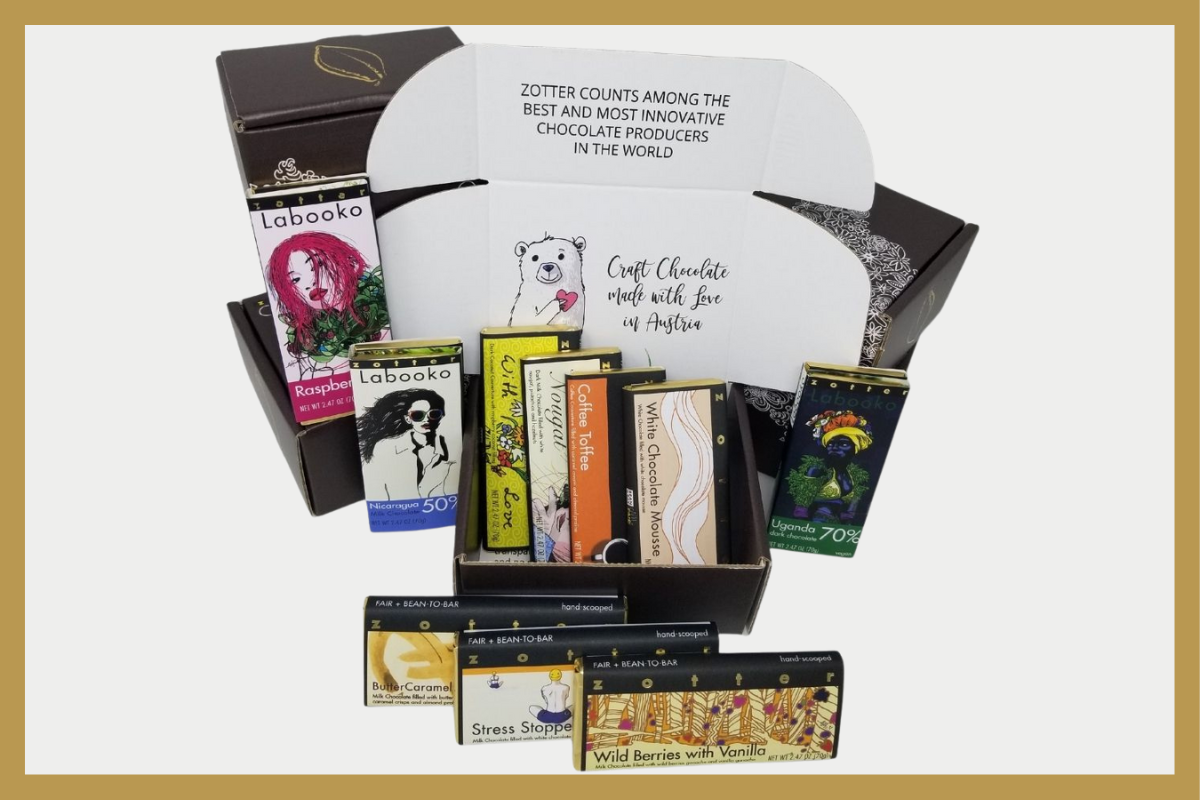It was my first trip to the African continent. The cheerful enjoyment of life and openness can be felt everywhere.
by Julia Zotter
Ghana is the second largest cocoa exporter in the world after the Ivory Coast. Only about 300 kg of cocoa beans are harvested per hectare (2.47 acres), in South America it is comparatively 800 kg per hectare (2.47 acres), with good care. The minimum price for cocoa is set by the government in Ghana. The state Cocoa Marketing Board (COCOBOD) was founded for this in 1947. In order to better protect cocoa farmers from fluctuations in the world market, COCOBOD sells up to 70% of the harvest at fixed prices before the start of the harvest and the cocoa farmers thus receive a guaranteed minimum price, regardless of stock market prices. Cacao cultivation is only a side income for most people. Only a few cocoa farmers stood out from the average with particularly good quality. We are looking for this particularly good organic + fair quality and we also pay a significantly higher price for it.
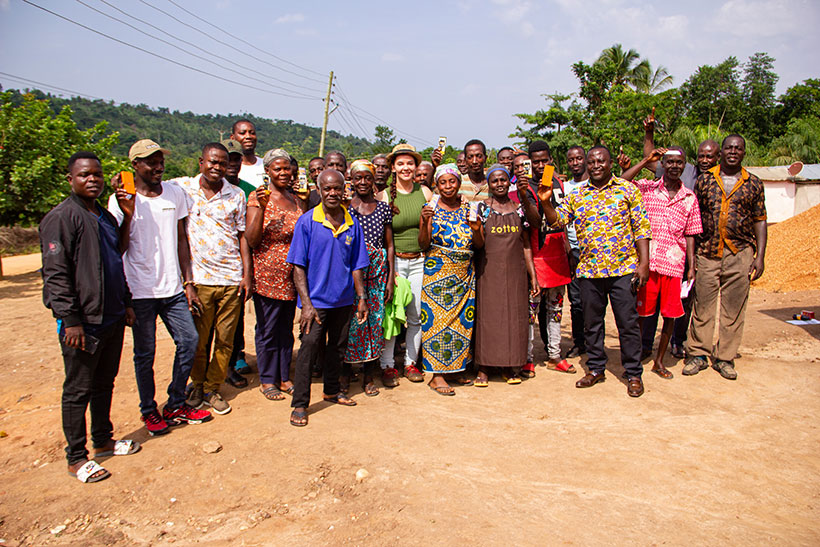
Cocoa from Ghana has a very pleasing flavor profile and is therefore in high demand internationally. Cocoa farmers ferment themselves and supply dried cocoa. The COCOBOD controls the quality for export very precisely, every sack is checked, so the physical quality is very high.
There is usually a church in the village and there are one or two wells for drinking water supply. River water is used for irrigation, or rainwater from a collection tank. The children help out on the family farm. Although school attendance in Ghana is free, not everyone goes. Therefore it is important that children get a warm lunch at school, then the families have to cook a portion less and this is often an incentive to send the children to school.
On my trip we passed a school, I looked in the window and everyone shouted and waved. I was a welcomed change during class. There is hardly any tourism, strangers are a rarity and are welcomed with great interest. People everywhere are friendly, wave, are sociable and warm.
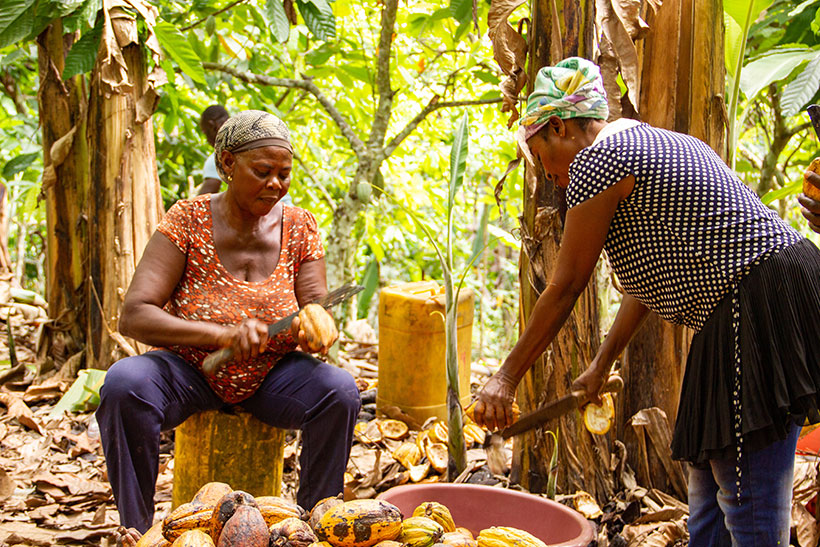
We also had a very interesting dining experience in Ghana. Manioc roots are processed for the traditional Fufu. This is really hard work, because the cooked root has to be pounded afterwards. It’s very exhausting, I tried it too and soon gave up. The best way to do Fufu is to start with the man stomping and the woman stirring the Fufu. A Baptist and his family cooked and you could buy food from them. As a tourist, I got a particularly large portion of the local specialty. There was stew and Fufu. All kinds of animal parts were processed in the stew, beef, also chicken feet – for example, I had kidneys inside and another portion had tripe pieces inside. That smells really really strong. In any case, I didn’t want to get a second round!
We were in Ghana for 3 days, at that time the Festival of Silence was taking place in the Suhum area. It was absolutely quiet on the streets. This is the festival when the ancestors come to visit and you have to be very quiet in order not to scare the ancestors away. At the end there is a big party where you can dance and laugh, unfortunately I wasn’t there anymore. I would have liked to dance!
Before I left for São Tomé, I was given traditional clothing, and a tailor came to sew the things, and the next day everything was ready. People are very fashion conscious! I’ve seen so many colorful, beautiful patterns, everyone is dressed cheerfully, whether for work or in the evening, when things can be even weirder. I would have loved to spend more time at the markets in Accra, but my journey took me to São Tomé.
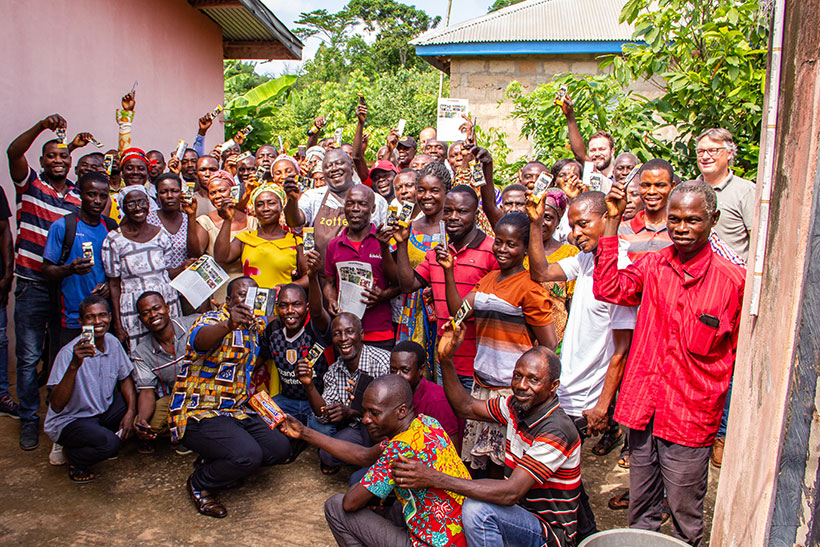
São Tomé is a very touristy island, a stark contrast to Ghana. The island is small and much of the Portuguese colonial era can still be felt. Portuguese culture is present everywhere. All speak Portuguese, but also Spanish, English and French. The population is consistently multilingual. About 100 years ago, São Tomé was the largest cocoa exporter.
Central fermentation is currently being rebuilt, which is simply more efficient. In the CECAQ-11 cooperative, plants are specifically cloned, they want to increase productivity and have already increased the yield from 300 kg to 600 kg and would like to reach 700 kg / hectare (2.47 acres) and are even aiming for a yield of 1,000 kg / hectare (2.47 acres). They are trying very hard to improve and are in regular contact with Brazil.
There is a lot of fishing, it is a very diverse island. Thanks to alternative sources of income as taxi drivers or in tourism, people there are not so dependent on cocoa cultivation. There is the potential, the cocoa is very promising and of good quality. It would be nice to see, if the young generation’s quality offensive is going to be successful.
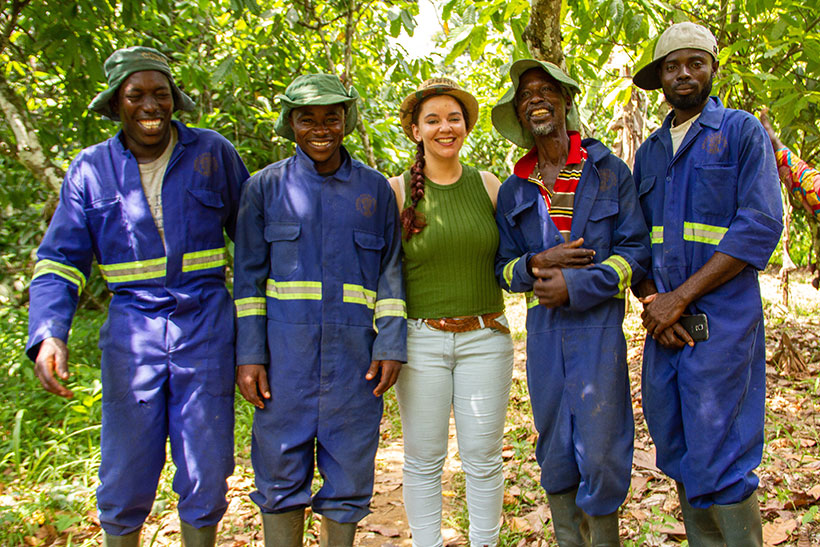
From São Tomé we continued our journey to Togo . As a former French colony there is no language barrier either as everyone speaks French or a slightly different version of Twi and Ewe. The Gebana employee who accompanied us also spoke 5 languages, which impressed me very much.
Lomé is the capital, but has the structure of a village. There is a paved road right through the village, but there are hardly any traffic rules. We traveled to Palimé, one of the main cocoa regions in Togo. It is an easy highland, developed for tourism and has a good infrastructure. There are waterfalls and a slightly more moderate climate.
The cooperatives are all still very young and relatively small with about 300 farmers, there are also some with 70 farmers. A lot is still in the making, the yield is still very low at 300kg/hectare (2.47 acres).
One of the cooperatives we visited, is run by a Togolese woman who is married to a Swiss man. A lot of things are better organized there, better trained and of course there are already higher yields. Nevertheless, we have to explain to the cocoa farmers that we cannot process different bean sizes because we do not get a consistent roasting quality and we have to sort out the small beans. With the additional effort, the cocoa is becoming very expensive for us. Since hardly anyone visits there, they don’t know the processing chain and don’t know what it means if the cocoa is of inferior quality as a result. But we need a uniform, screened quality.
Togo is also known for its fashion culture, everything is very colorful and cheerful. And of course the food! In Togo, too, people cook a lot with Fufu and stew, which is a bit different than in Ghana. Everything is freshly cooked and the people take pride in their cuisine. I miss all the good food, both the Fufu and the amazing fresh fish of São Tomé.
On my journey through West Africa, I was welcomed with open arms, was able to learn a lot of new things and now I understand the regional context even better. I imagined many things differently, I am surprised by the possibilities and hope for a lively exchange and look forward to the next cocoa deliveries from our partners in West Africa.
I am planning my next cocoa trip to Uganda and Tanzania and maybe my little sister Valerie will accompany me for the first time!
Julia Zotter
-
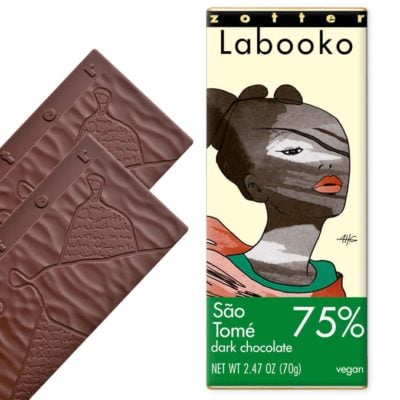 75% São Tomé$10.19
75% São Tomé$10.19 -
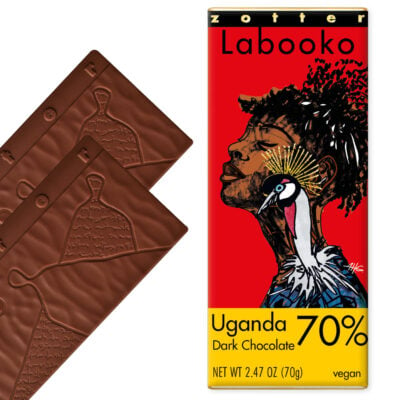 70% Uganda$10.19
70% Uganda$10.19 -
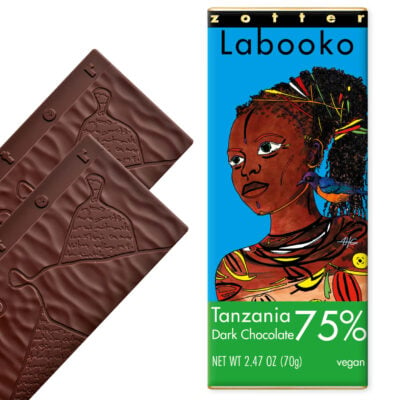 75% Tanzania$10.19
75% Tanzania$10.19 -
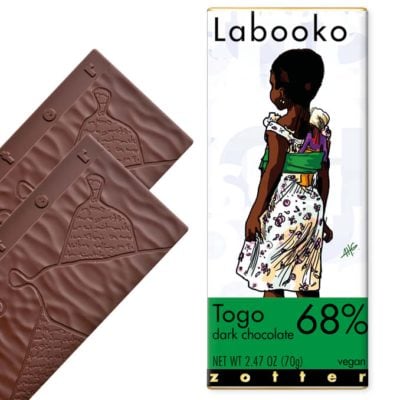 Togo 68%$10.19
Togo 68%$10.19
